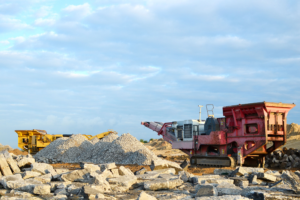4 signs the revenge travel boom is slowing down and what it means for investors

The revenge travel boom has been going for…well…a while now. It is hard to pinpoint an exact date when it started because all tourist markets re-opened at different times.
But although it has been going for several months, it shows no obvious signs of slowing. Many companies that sunk into losses have returned to profitability, to varying degrees. Our Instagram feeds are full of our friends in Europe. Even so, plenty of travel stocks like Qantas (ASX:QAN) are still behind pre-pandemic share price levels as well as capacity. So surely they will re-rate because there are no signs of the travel boom slowing down and capacity will continue to be added. A new golden era is only just getting started. Really just getting started? It’s been nearly two years now. No signs that travel is slowing down? There actually have been some early signs that the revenge travel boom is either peaking or is just about to.
In this article, we highlight 4 signs the revenge travel boom is slowing and outline what it means for investors. We’re not going to suggest short all travel stocks. But, there may be a handful that you should get of, especially if you’ve made profits on them. Nor are we suggesting travel demand will fall as it did during the GFC. Rather, that it is no longer November 2021 when travel was a fraction of pre-COVID levels and has a long way to go.
And therefore, investors pretending that it still is November 2021 aren’t and buying into them now expecting a 100-200% return shouldn’t be.
What are the Best stocks to invest in right now?
Check our buy/sell stock tips
4 signs the revenge travel boom is slowing down
1. Slowing spending on travel
The CommBank HSI Index has shown Australian consumers (at least the 7 million of them that are CBA customers) are tightening their belts amidst high inflation. Spending on travel fell 6.2% in May 2023 and another 2.5% in June.
Now, the July 2023 HSI figures didn’t single out travel and just depicted ‘recreational costs’ which included travel. It showed some specific categories increased such as online travel bookings and travel agencies. But this was offset by reduced spending at accommodation. And keep in mind that this is a major school holiday period when people normally take holidays anyway.
Turning to the US, the Bloomberg Second Measure (which similarly tracks transaction data, only it tracks billions of transactions) found that consumer spending on the major US airlines declined for the first time in over 2 years. Hang on, why is everyone in Europe right now if this really is true? Because most of those trips were booked several months and interest rate rises ago. And none of this is to say that they’re stopping travel altogether, but consumers may just be becoming more cost conscious.
2. Demand for certain airline routes falling
Airlines were slow to add back capacity post-pandemic, leading to the high ticket prices that passengers had to pay. But not all airlines have been able to capitalise equally, some tourist markets took longer to re-open and other were constrained with supply chain issues. Many airlines took the opportunity to launch new routes. But not all of them have paid off.
Take a look at startup airline Bonza and its decision to cut 5 routes barely 6 months after launch, not to mention its private equity owners’ decision to withhold a 737 MAX promised to it in favour of another airline it invested in. Bonza is the first local carrier to try so-called ‘point-to-point’ leisure services that skip out major cities and allow consumers to fly direct from holiday destination to holiday destination. It said 93% of its network (prior to the cuts) were not flown by any other carrier. Doesn’t necessarily bode well for hopes that the current travel boom will last for the rest of the decade.
Also, observe the struggles of Rex (ASX:REX) in getting its new capital city jet operations into profitability. Now you could put these two airlines’ struggles down to the fact that consumers are keen for international trips rather than domestic trips right now. That is certainly true and not an Australian only phenomenon.
What about overseas’ airlines?
Alaska Airlines and Southwest Airlines disappointed investors in their recent quarterly due to falling demand. The reason was that both are mostly North American only airlines, missing out on the European travel boom. But this has not stopped airlines from reducing services to some international sectors. When Australia first opened, Qantas had 4 times weekly services between both Sydney and Melbourne to Delhi. This was not a pre-COVID route, one Qantas decided to trial as it saw the connection that existed between India and Delhi.
Both routes were amongst the best sellers immediately post-COVID. Now, it has just one thrice weekly service between Melbourne and Delhi as demand has softened.
We also observe that many state governments launched subsidies to get new routes launched – look at NSW’s Aviation Attraction Fund and Queensland’s Attracting Aviation Fund. Both have been successful in getting new routes launched – look at United Airlines’ Queensland expansion. But it remains to be seen if these routes will stay once the subsidies expire. Qantas is that optimistic about the Brisbane-USA travel market, they relegated the route from their new 787s to the A330s post-COVID that don’t even have rests for the cabin crew.
3. Some stocks are seeing the first signs decline in over 2 years
While some stocks see no end to the state of paradise they are in right now, this isn’t the case with all companies. As we noted above, Alaska and Southwest are seeing demand falling as domestic only airlines.
Turning to Australia, accommodation provider Alloggio (ASX:ALO) told investors in May that demand was softening rapidly. It expected ‘Forecast Normalised EBITDA’ (being EBITDA less rental expenses) to be $6.4-$8.2m, but downgraded it to $4.8-$5.1m. ‘Booking pace failed to pick up in the traditional post Easter period,’ it said.
‘Reduction in consumer confidence traditionally hits the hospitality industry early in an economic cycle and the low consumer confidence reflected in our April result was mirrored in the Westpac Melbourne Institute Confidence index decline in May and otherwise exacerbated by unseasonable colder conditions in key holiday destinations’. We won’t get to see its final FY23 result now that it has been taken over.
You could just dismiss Alloggio as one company having bad luck compared to the rest of the sector, so let’s look at Airbnb (NDQ:ABNB). In May, it released its results for the March quarter and it found the revenge travel boom was running out of steam. Average daily rates were flat as consumers became more price sensitive. 3 months later, it slightly beat consensus estimates for quarterly revenue, driven purely by Americans travelling internationally. The strong US dollar has made travel more appealing for Americans to travel abroad rather than staying at home. And its average daily rate rose by just 1%, with rates in America declining 1%.
Turning to back to airline stocks, discount carriers around the world from Ryanair to Allegiant have all noticed softening demand for the upcoming winter season and have launched sales to stimulate demand.
4. Air fares falling
It is unlikely the revenge travel boom would be called a boom in the first place, had consumers been unwilling to pay the high airfares that were on offer. With postponed trips from the pandemic, and flight credits or vouchers in many cases, consumers did one thing with their mouths and keyboards but did another with their wallets. But there are signs air fares are coming down.
In the US, air fares fell 1.7% in June 2023 – the first decline since February 2021. And in Australia, ACCC data has found that while airfares are above pre-COVID levels, they fell 14% between February and May 2023 in real terms.
Even if travel demand remains solid as a direct consequence, airlines won’t be making as high margins as they have been in the last 12-18 months. And perhaps they may have no choice but to cut air fares. A Finder survey in May revealed that 37% of Australians found that travelling abroad has become unaffordable and another 23% said it was close to being out of reach.
What does all this mean for investors?
In our view, investors pretending that it still is November 2021 aren’t and buying into any travel stock now expecting a 100-200% return shouldn’t be. That would be like buying Payright or Openpay in 2021 thinking they would benefit from the ‘BNPL boom’. The fact of the matter there is the BNPL boom began prior to COVID and just about all the growth was (and still is being) captured by Afterpay. The travel boom is far from nascent now and could well be starting to slow.
We would point to another parallel. A2 Milk (ASX:A2M) benefited in the early months of the pandemic as everyone engaged in pantry stacking. And shares kept going up months after the boom moderated even though the company’s revenues were slowing because the daigou trade virtually dried up due to closed borders. There may be some ways to play the boom like Corporate Travel Management (ASX:CTD), if you want to gamble that corporate travel will return to pre-pandemic levels and want a 10-20% return.
But we would urge caution in buying into accommodation providers. For airlines, you’d want airlines with a dominant market share, exposure to international travel and without big liabilities on their balance sheet or about to appear. Qantas (ASX:QAN) meets the first two criteria but not the third. Hang on? Isn’t it expecting a $2.5bn profit in FY23. It is. But we have two retorts to that. First, it is a slim profit margin of barely over 12%.
And secondly we pose the question: Can you expect the Red Roo to continue to make $2bn+ profits over the next five years with a $12bn capex bill over the next five years or so? That $12bn figure is already 60% of its annual revenues and 380% of its projected profit for FY23. Also remember, that the $12bn figure is just for aircraft it has already ordered – it will likely need to order even more.
We acknowledge investors have made money from the travel boom. But as was the case with Afterpay, those who profited got in early not late and were willing to be patient over a few years. There are opportunities for investors to make 100-200% returns (or even better) from stocks, but they lie in investing in long-term structural trends rather than short to medium term trends that are well underway and have likely peaked.
Stocks Down Under Concierge is here to help you pick winning stocks!
The team at Stocks Down Under have been in the markets since the mid-90s and we have gone through many ups and downs. We have written about every sector!
Our Concierge BUY and SELL service picks the best stocks on ASX. We won’t just tell you what to buy – we give you a buy range, price target and stop loss level in order to maximise total returns. And we will only recommend very high conviction stocks where substantial due diligence has been conducted.
Our performance is well ahead of the ASX200 and All Ords.
You can try out Concierge … for FREE.
GET A FREE TRIAL TO CONCIERGE TODAY
There’s no credit card needed – the trial expires automatically.

Blog Categories
Get Our Top 5 ASX Stocks for FY26
Recent Posts
Austal (ASX: ASB) Secures A$1bn Defence Win: A Defensive Buy at 28x Earnings?
Austal (ASX: ASB) locked in more than A$1.16 billion in new contracts last week, cementing its position as Australia’s go-to…
Develop Global Wins $200m OceanaGold Contract- What It Means for Investors
Develop Global (ASX: DVP) climbed 4% to A$4.36 on Friday after securing a A$200 million underground development contract with global…
Nova Minerals Drops 14% on $20m Capital Raise- Buy or Avoid?
Nova Minerals (ASX: NVA) dropped nearly 14 per cent to A$0.90 following the announcement of a US$20 million (approximately AUD…




